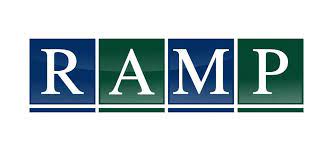Veterinary Physiotherapy. What and Why
- Hannah Goldney
- Feb 23, 2022
- 4 min read
Updated: Mar 3, 2022
The answer to all of your vet physio questions
You may have seen vet physios about and wondered what they do and why. You may also have heard many different terms used for similar things such as "the back lady", chiropractors, osteopaths, charter physiotherapists, massage therapists and the list goes on! So here are all of your questions answered.

Since graduating in July and setting up as a veterinary physiotherapist, I often get asked "what is a physio" or "what is the difference between and physio and ...." and I thought that it was time to answer some of these questions.
Around 10 years ago, the only way to become a veterinary physiotherapist was to study human physiotherapy and become a Chartered Physiotherapist before taking further qualifications to practice on animals. More recently, universities started offering degrees in Veterinary Physiotherapy meaning that you do not have to treat humans first. I attended a four year long Bachelor of Science with Honours degree (BSc Hons) at Harper Adams University. This degree included a year's work placement at a canine and equine physiotherapy facility, an additional year of clinical rotation in practice, a research-based dissertation and multiple practical final exams.
After passing my exams and gaining a First class degree, I registered with the National Association of Veterinary Physiotherapists (NAVP), gained professional insurance and launched my business to start treating clients!
So now you know a bit more about me and my degree, let's get into some common questions!
What Do Veterinary Physiotherapists Do?
Vet physios work alongside your veterinary surgeon to help reduce pain, prevent injury or re-injury and to improve mobility and performance.
This means that although many people associate physios with rehabilitation or recovery, we also work with fit, healthy animals that are used for a job or purpose such as competition horses or service animals to maximise their efficiency and performance levels.
Vet physios help all animals to reach their full potential in terms of physical health and workload.
But how do we do this you may ask? Vet Physios use a combination of various treatment techniques to create a specific treatment plan tailored to the needs of each individual animal. This includes:
Manual Therapies- Such as massage or manipulation techniques.
E.g. Your horse/ dog may have increased tension in their hamstrings. In this case, we would work with the tissue to release the tension manually.
Electrotherpies- Modern technology has massively increased the number of electrotherapies available for use in treatment plans. This can be anything from a TENs machine to high tec LASERs. Each has different benefits, but here at Goldney EquinePhysio, I use H wave therapy regularly (Find out more in my H-wave Blog)
Keep an eye out for more electrotherapies to be added to my tool kit, coming soon
Remedial Exercise- Here is where the hard work begins. Remedial exercises are given to you between sessions to help to strengthen any weak areas of muscle. Most commonly, these are exercises aimed and strengthening the core and back. Here is a blog explaining more about exercises such as pole work
How to choose the right Veterinary Physiotherapist
Unfortunately, the term "Veterinary Physiotherapist" is not protected by law meaning that anyone can call themselves a vet physio and go out and treat clients. This is obviously concerning as, without proper knowledge of veterinary anatomy and the science behind many of our treatment techniques, severe damage to your horse or dog could occur.
To combat this, several governing bodies were established where veterinary physiotherapists with properly structured qualifications can register. An example of a few of these; NAVP, IRVAP or RAMP.
Each of these governing bodies has its own code of conduct and professional standards that each member must adhere to. It is therefore vitally important that your veterinary physiotherapist is registered with a governing body. Without this, they are also not covered by insurance.

Similarly, Chartered Physiotherapists are those who studied human physiotherapy first (Thus gaining their chartered status in human practice), before studying further to become a veterinary physiotherapist. Unfortunately, there is no such thing as a "Chartered Veterinary Physiotherapist", however, you will often see the term ACPAT which stands for the association of chartered physiotherapists in animal therapy. Again, this means they are registered with a governing body and have the appropriate qualifications to treat your animals.
So, the moral of the story,
Always ensure that your Veterinary Physiotherpist is registered with an appropriate governing body
Here are some logos to look out for
What is the difference between a Chiropractor and a Veterinary Physiotherapist?
Chiropractors focus more on the bony structures of the animal and use, small, sharp movements to make adjustments to the animal's joints and bone.
I ALWAYS recommend that if your animal sees a chiropractor, they should also see a veterinary physiotherapist. This is because the chiropractor may 'realign' the skeleton, but this does not treat the muscles that have become accustomed to things being out of line and therefore the muscles will pull the bones back to how they were pre chiropractor treatment. I believe the chiros and physios should work together to cover all aspects, bone and soft tissues.
Please note, the above information is a very brief explanation of the topics discussed. There may be several governing bodies missed off the list. This blog is in no way intended to offend non-registered veterinary physiotherapists or any other veterinary professional. The aim of this blog is to allow readers to make a more informed decision when choosing a therapist








Comments